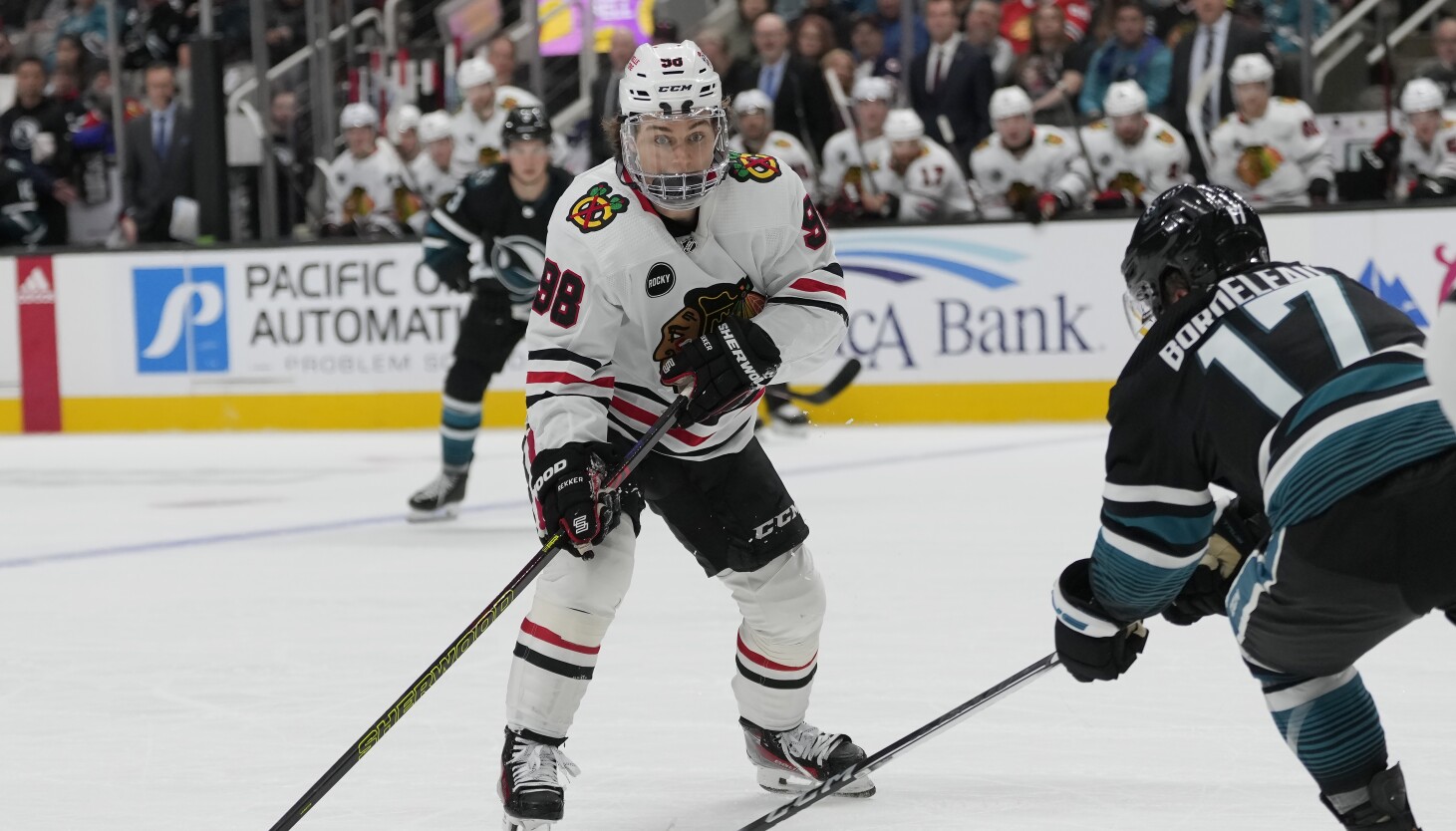Connor Bedard thought his Blackhawks rookie season was just “OK,” but it actually was the most productive rookie season by a first overall pick — on a points-per-game basis — since Connor McDavid in 2015-16.
What will Act II of the Book of Bedard bring?
There will be plenty of factors working in his favor as he attempts to make his 2024-25 season even more impressive than his 2023-24 debut. He’ll be more familiar with the opponents he’ll face each night and more comfortable in the NHL spotlight. He’ll apply lessons learned about what he can and can’t get away with at this level, and he’ll have a more competent supporting cast.
On the other hand, tallying 61 points in 68 games — as he did last year — is no easy feat. It will take plenty of effort to repeat that output and even more effort to top it.
Entering last season, forwards taken first overall during the NHL’s salary-cap era (since 2005) averaged 53 points and 68 games played — a rate of 0.78 points per game — during their rookie seasons. Bedard averaged 0.90 points per game.
Now it’s time for a similar yet slightly different historical analysis: How have forwards who enjoyed comparably productive rookie seasons fared in their second seasons?
Let’s look at rookie forwards who averaged at least 0.80 points per game, lowering the bar slightly from Bedard’s lofty standard. There are 27 players who did that in the salary-cap era before Bedard, creating a group that includes some players often cited as Bedard peers (McDavid, Patrick Kane, Sidney Crosby, Auston Matthews, Mathew Barzal) and some players never described as such (Michael Bunting, Brad Boyes, Colby Armstrong). Johnny Gaudreau, whose death last week rattled the hockey world to its core, is also on the list.
In their rookie seasons, that group collectively had 1,746 points in 1,900 games — an average of 0.92 points per game. And in their second seasons, they had 1,885 points in 2,063 games — an average of 0.91 points per game.
That’s right: The NHL’s best rookies over the last two decades have, on average, declined a tick in their second seasons. That’s a discouraging statistic, one that exemplifies why sophomore slumps can be so anxiety-inducing.
When restricting the sample pool to rookies aged 21 or younger — eliminating Bunting, Boyes and Armstrong, as well as players such as Artemi Panarin and Kirill Kaprizov — the statistic becomes only a tad rosier. The 20 guys who fit that criterion collectively improved by 0.04 points per game (0.94 to 0.98) from their first seasons.
There are some bright spots. Crosby improved by a group-leading 0.26 points per game (from 1.26 to 1.52), Gaudreau improved by 0.19 (from 0.80 to 0.99) and Matthews improved by 0.18 (from 0.84 to 1.02).
There are just as many cautionary tales, though. Barzal’s production decreased by 0.28 points per game (from 1.04 to 0.76), and Ryan Nugent-Hopkins’ production decreased by 0.24 (from 0.84 to 0.60). Even Kane temporarily stagnated, averaging 0.88 points per game in each of his first two seasons.
It must be said that if Bedard improves by 0.04 points per game and stays healthy for all 82 games this coming season, that works out to 77 points — a stellar number for a 19-year-old by any definition.
But he and the Hawks will hope for more. Ignoring the warnings of historical precedents, a full 1.00 points per game seems like a reasonable expectation for a transcendent star of his magnitude.
So how can he buck the trend and achieve that rate of improvement? It starts with simply getting and maintaining more puck possession, especially in the offensive zone.
Last season, Bedard and his linemates spent large portions of many shifts either chasing the puck or buried in their own zone. That’s how the Hawks managed to get outshot 608-438 and outscored 67-37 during their best player’s five-on-five ice time.
Defensive improvement would help Bedard create more opportunities to display his world-class skill with the puck and translate it onto the scoreboard. Playing with more defensively reliable linemates would help, as well — and new signings Teuvo Teravainen and Tyler Bertuzzi seemingly would fit that bill better than Philipp Kurashev.
Secondly, it would behoove Bedard to learn how to use his accumulating NHL experience faster than opponents learn how to use their accumulating experience facing him.
Guys who played against him two, three or four times last season will have memorized his tendencies and confront him with more educated game plans this season. If Bedard can figure out those players’ tendencies and develop ideas to exploit them, though, he could keep the playing field level.
And if he can anticipate their game plans, tweak his own tendencies and become unpredictable in the best way — as in, unpredictable to opponents but predictable to teammates — he could turn the tables and become not one but two steps ahead.
Rookie Bedard had a tendency to try to make plays that would’ve worked splendidly against junior defensemen but were easily broken up by pro defensemen, leading to turnovers and counterattacks. Considering the huge jump in levels he was making, those miscalculations were understandable and forgivable, but they won’t be as much moving forward.
But if sophomore Bedard can not only make smarter, lower-risk decisions but also unlock the plays that work splendidly against pro defensemen — the kinds of plays that only Crosby- and Matthews-esque star forwards can make — his innate creativity will become a strength.
That evolution feels inevitable, but the question is how quickly it will take place. For many prospects, it takes longer than two years, as the evidence shows. This season, Bedard will demonstrate whether he fits or defies that pattern.
